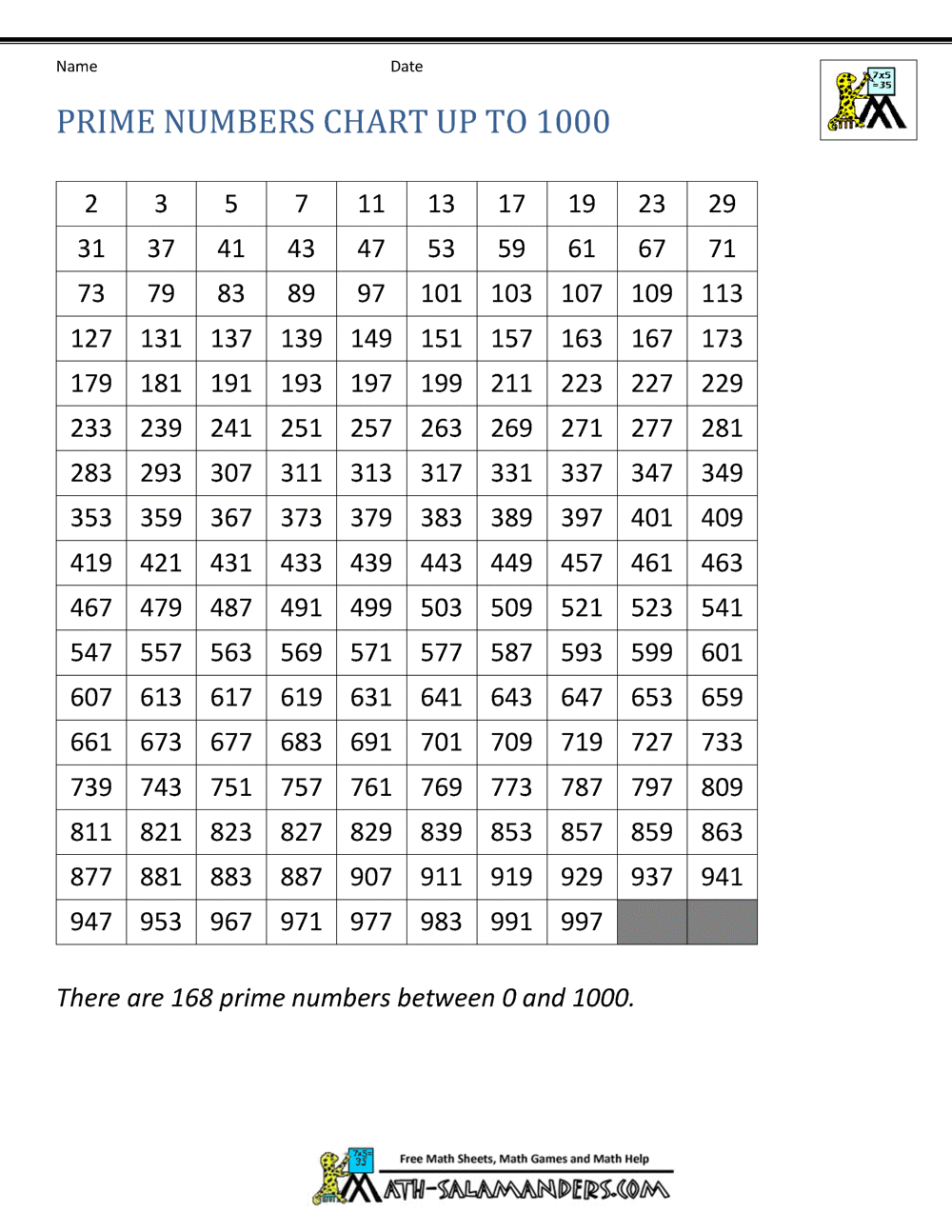
Prime Numbers Chart
Further, number 13 will have only 2 factors which are 1 and 13 so it is a prime number. Importance of Prime Numbers. We can consider prime numbers as the building blocks of numbers. Any whole number is said to be either a prime number or we can build it by multiplication of unique combination of prime numbers.

number chart math activities counting by 100 1 000 and 10 000 up to a
Welcome to the Math Salamanders Prime Numbers Chart page. Search for your own prime numbers, find the factors of a number and print out some of our pre-prepared prime number lists here. Prime Numbers Chart What is a prime number? A prime number is a number that is only divisible by itself and 1 . It must also be greater than one.
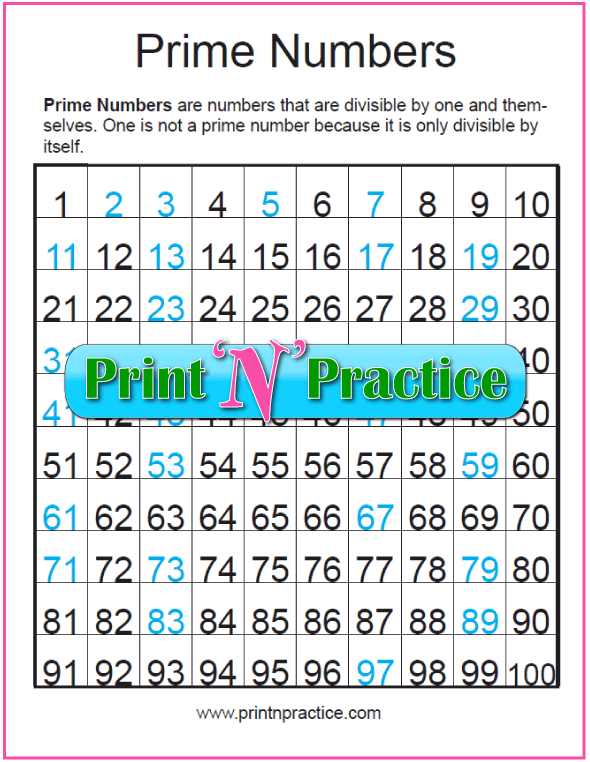
Prime Numbers Chart ⭐Four Awesome Printables!
A prime number chart is a useful tool to help kids memorize all the prime numbers between 1 and 100. A prime number is a number that is only divisible by one and itself, and has no other factors. I've made two free prime number charts parents, teachers, and students to use. The first chart is black and white, and the second has been colored.
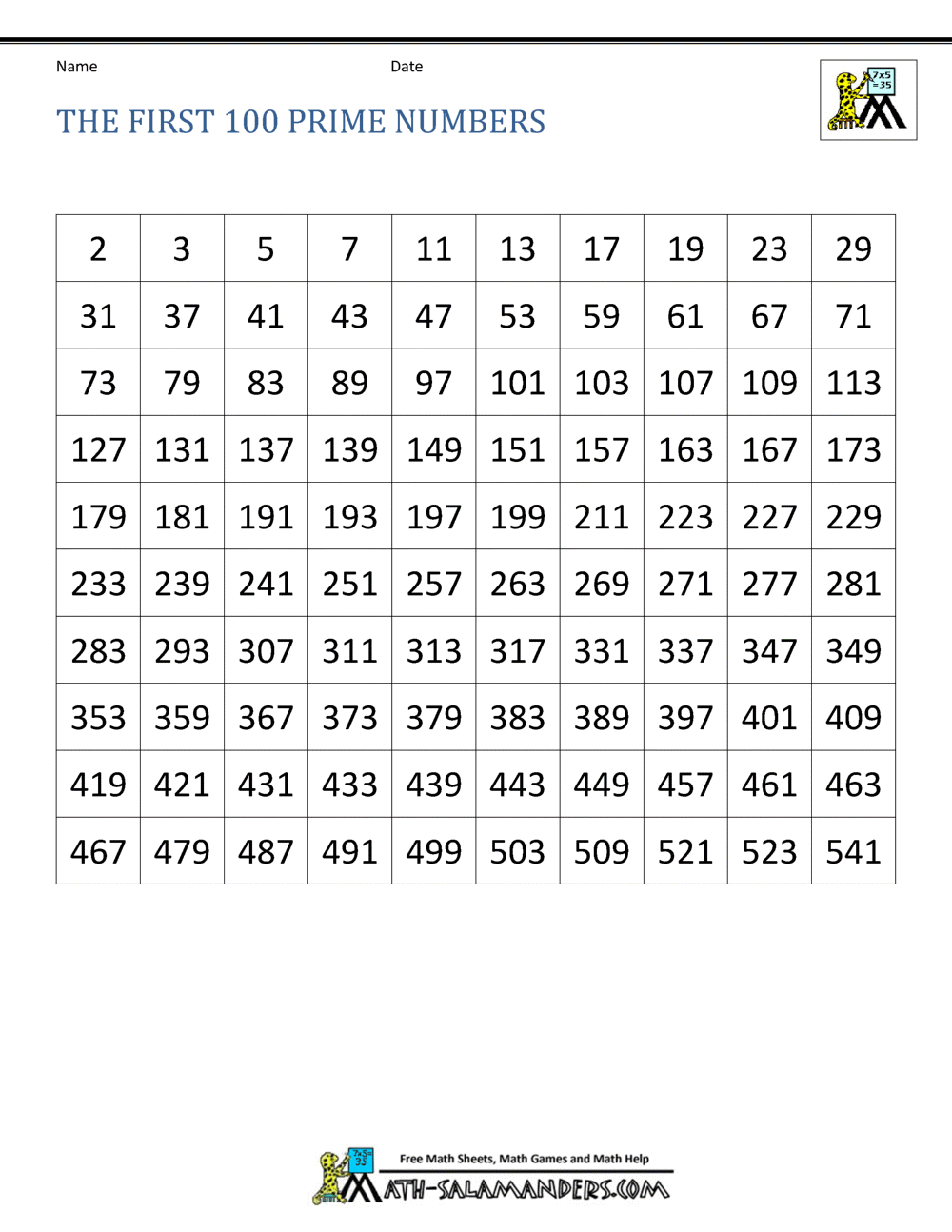
Prime Numbers Printable Chart
The first prime numbers chart has the 25 prime numbers that are in the first 100 numbers (in sequential order: 2, 3, 5, 7, 11, 13, 17, 19, 23, 29, 31, 37, 41, 43, 47, 53, 59, 61, 67, 71, 73, 79, 83, 89, 97). Except for the number 1, the composite numbers are black and the prime numbers are light blue. They can be traced for a quick memory.
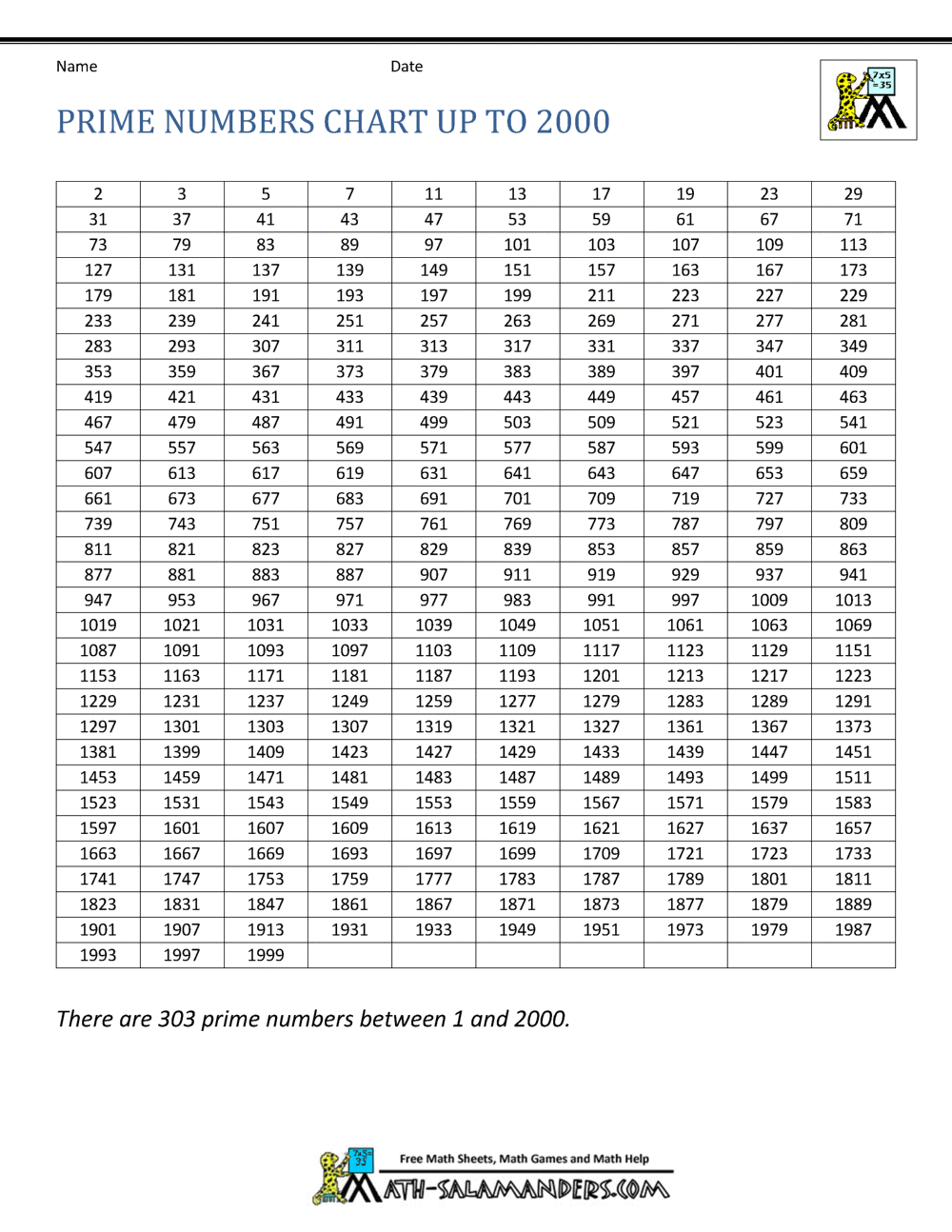
Prime Numbers Chart
This prime numbers chart displays all prime numbers from 1 to 100 in red. Do not try to learn this prime numbers chart by heart. A prime numbers chart should only be used as a quick reference. If the prime numbers chart does not have the number you are looking for, use this prime number calculator to quickly check if a number is prime.
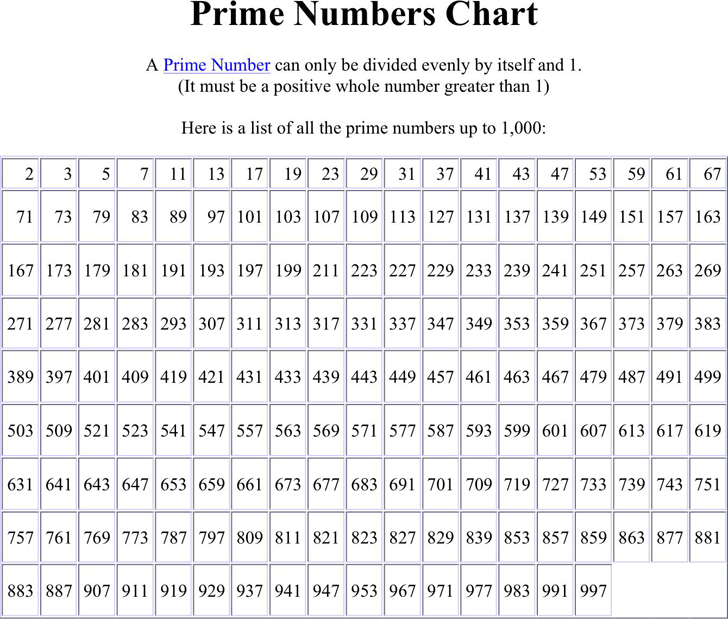
Free Prime Number Chart doc 42KB 1 Page(s)
AboutTranscript. Prime numbers are numbers that have only 2 factors: 1 and themselves. For example, the first 5 prime numbers are 2, 3, 5, 7, and 11. By contrast, numbers with more than 2 factors are call composite numbers. Created by Sal Khan.
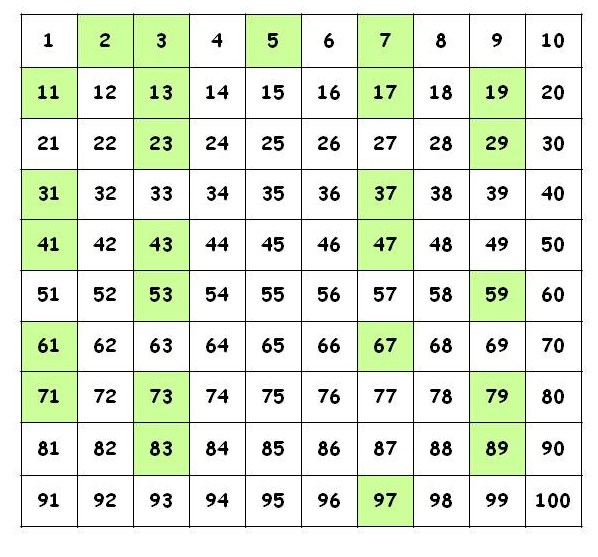
mathcounts notes Prime Numbers Mathcounts Beginning Level
Step 1: First create a list of numbers from 2 to 100 as shown above. We leave the number 1 because all prime numbers are more than 1. Step 2: We start from the first number 2 in the list. We cross out every number which is a multiple of 2 except 2. For example, we cross 4, 6, 8, 10, 12, 14, 16, and so on up to 100.
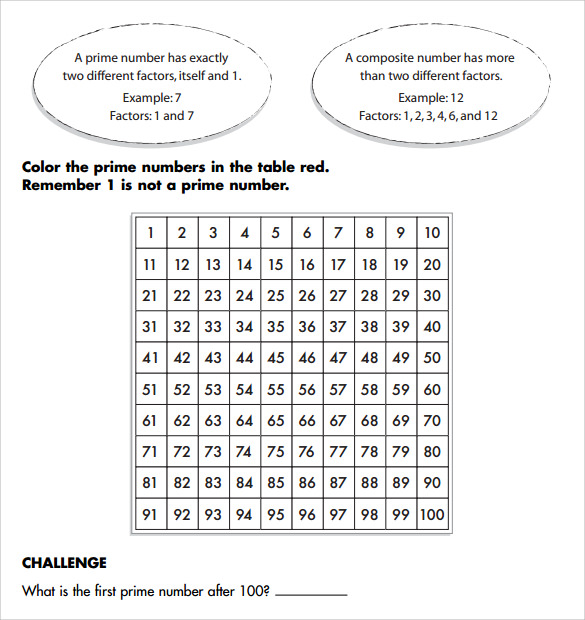
FREE 8+ Sample Prime Number Chart Templates in PDF MS Word
Chart Eratosthenes's method of finding prime numbers resulted in the formation of charts. Even today, they are helpful for our direct applications and mathematical calculations. Prime Numbers Up to 100 Chart Prime Numbers 1 to 1000 How to Find Prime Numbers There are different ways of finding prime numbers. They are:
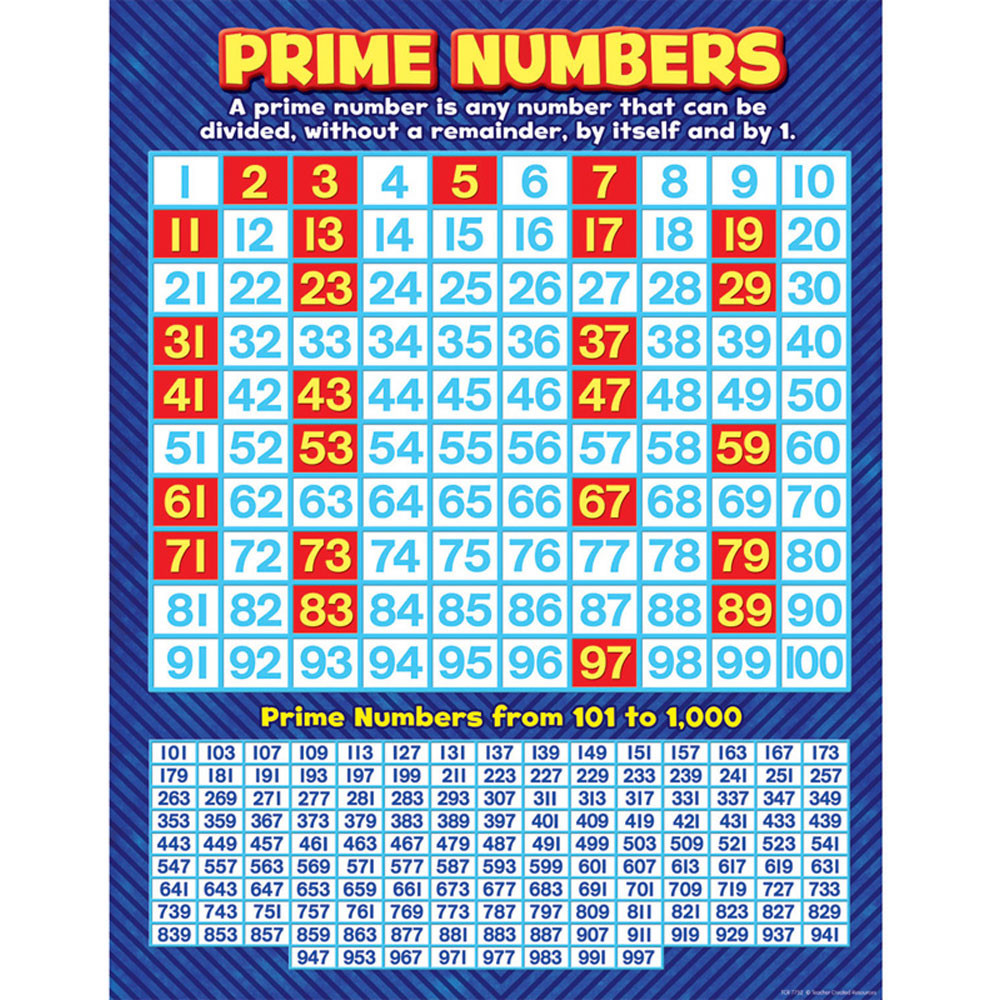
Prime Numbers Chart TCR7732 Teacher Created Resources
To find the prime numbers from 1 to 1000, we need to check if the number is a natural number and has no positive divisor other than 1 and itself. We do not consider 1 as a prime number, as it has only one factor but other prime numbers have two factors. For example, 5 is a prime number, because it has only two factors, 1 and 5, such as; 5 = 1 x 5
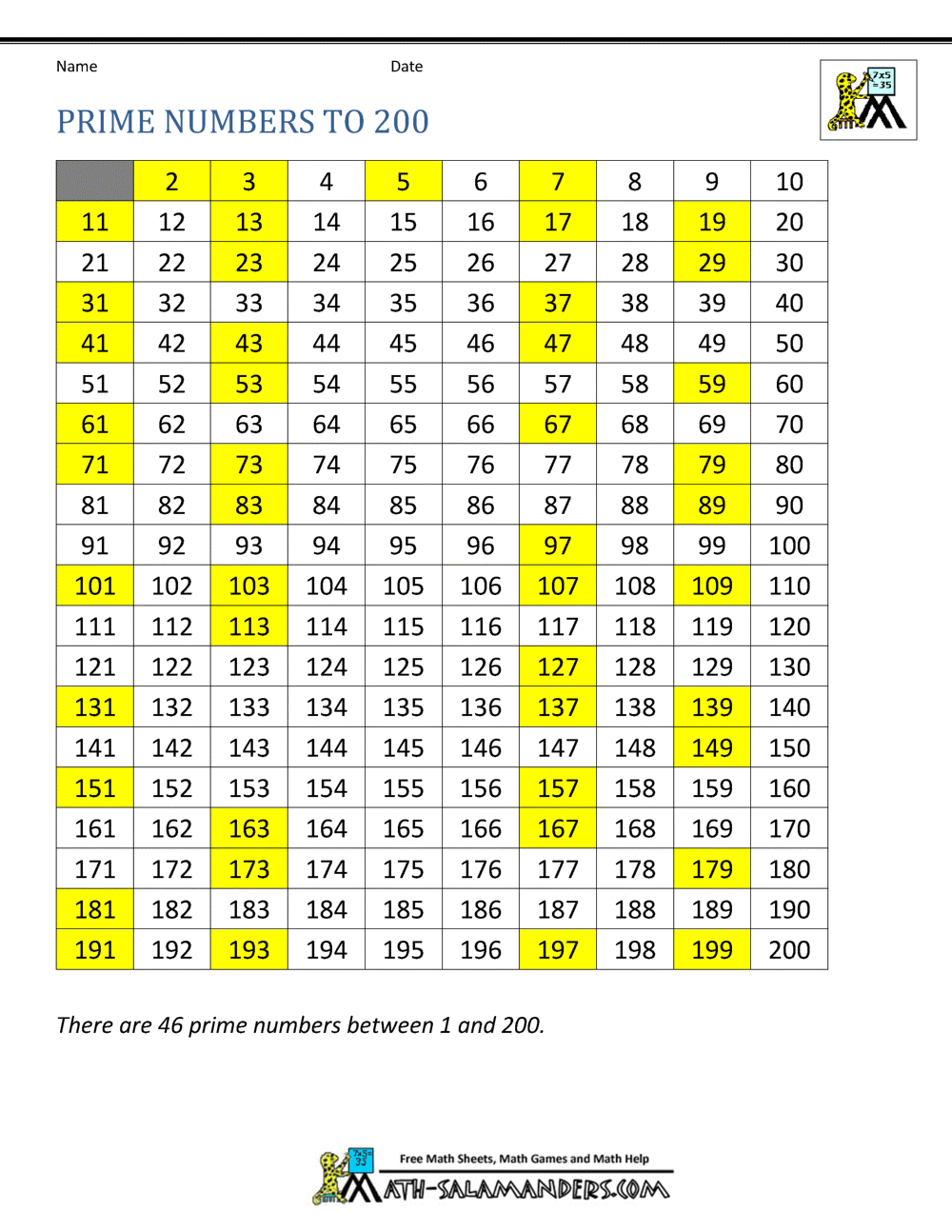
1Million gold 1st prime number weighted fish posted >=10/19/2016 UO
Prime Numbers Chart and Calculator A Prime Number is: a whole number above 1 that cannot be made by multiplying other whole numbers (if we can make it by multiplying other whole numbers it is a Composite Number) Here we see it in action: 2 is Prime, 3 is Prime, 4 is Composite (=2×2), 5 is Prime, and so on.
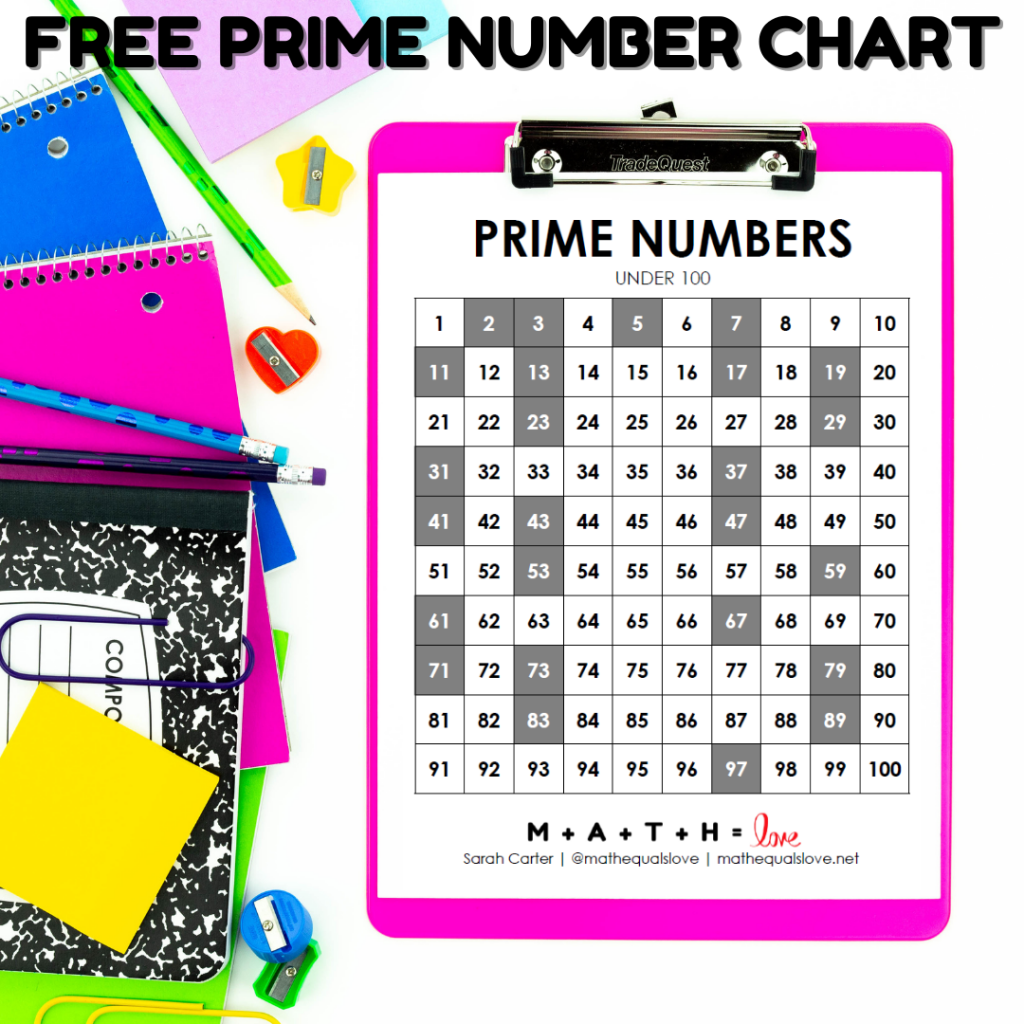
a prime number chart
What are Prime Numbers? A prime number is a positive integer having exactly two factors, i.e. 1 and the number itself. If p is a prime, then its only factors are necessarily 1 and p itself. Any number that does not follow this is termed a composite number, which can be factored into other positive integers.
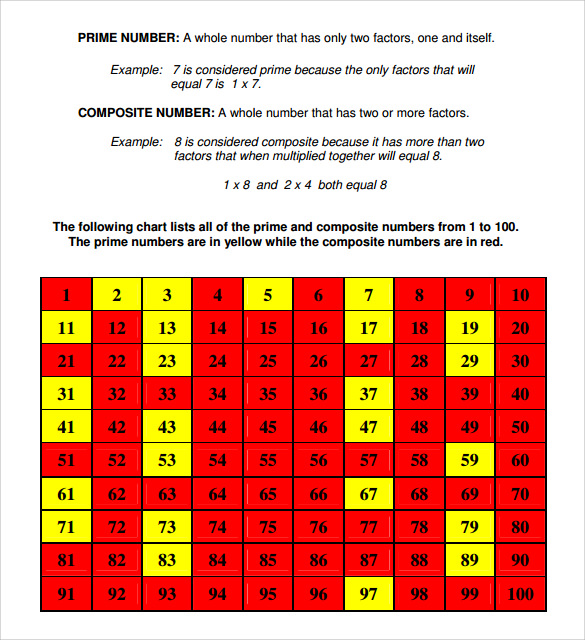
FREE 8+ Sample Prime Number Chart Templates in PDF MS Word
Step 1: Make a hundreds chart. (Write all the natural numbers between 1 to 100 using 10 rows and 10 columns.) Step 2: Leave 1 as it is neither a prime number nor composite number. Step 3: Encircle 2 and cross out all its multiples (such as 4, 6, 8, 10, and so on) as they are not prime.

Carson Dellosa Prime Numbers Chart CD414062 SupplyMe
Prime Numbers Chart. I created this free printable prime numbers chart that features all of the prime numbers under 100 for my Pre-Calculus students to reference while simplifying radicals recently. I think it would be useful for a much wider range of math students, though. My students were looking for a quick way to tell if a number was prime.

Finding Prime Numbers
Here's a list of all 2,262 prime numbers between zero and 20,000. I assembled this list for my own uses as a programmer, and wanted to share it with you. Before I show you the list, here's how to generate a list of prime numbers of your own using a few popular languages. How to Create a List of Primes Using the Sieve of Eratosthenes

number theory Primes and 32 where did this pattern come from
Prime Number Chart 1-100 This first chart is a 100s chart with the prime numbers highlighted. The chart is in black and white for easy printing. Download the Chart Now Informational Prime Number Chart 1-100
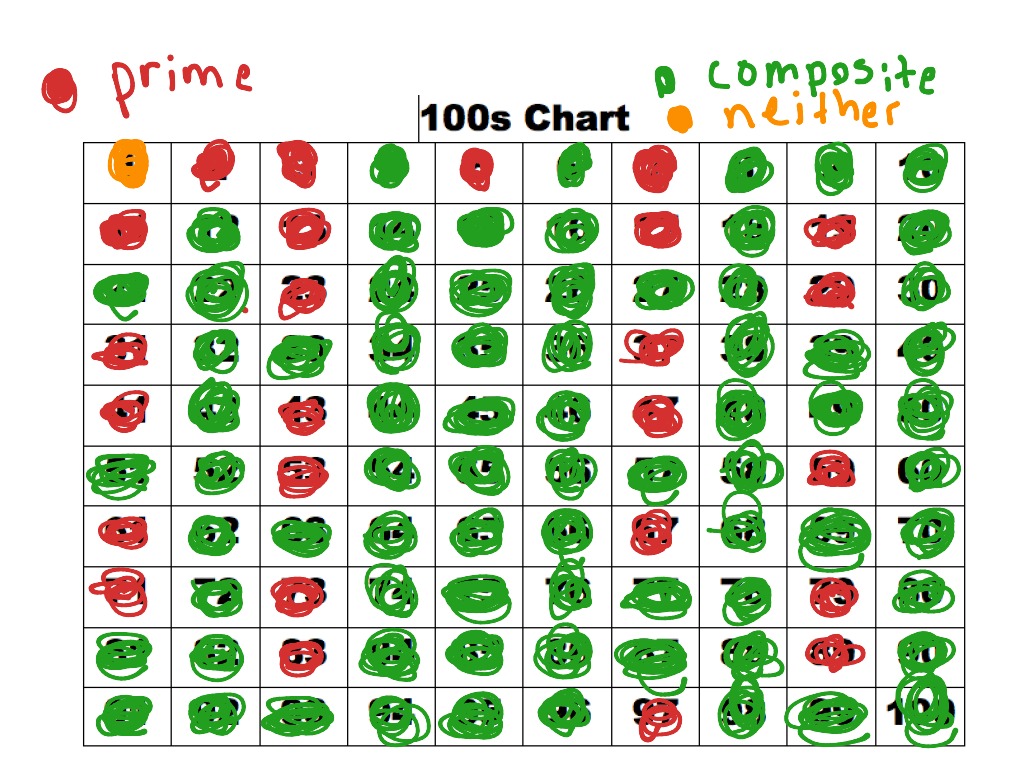
100 chart prime composite numbers Math ShowMe
A prime number (or prime) is a natural number greater than 1 that has no positive divisors other than 1 and itself. By Euclid's theorem, there are an infinite number of prime numbers. Subsets of the prime numbers may be generated with various formulas for primes.